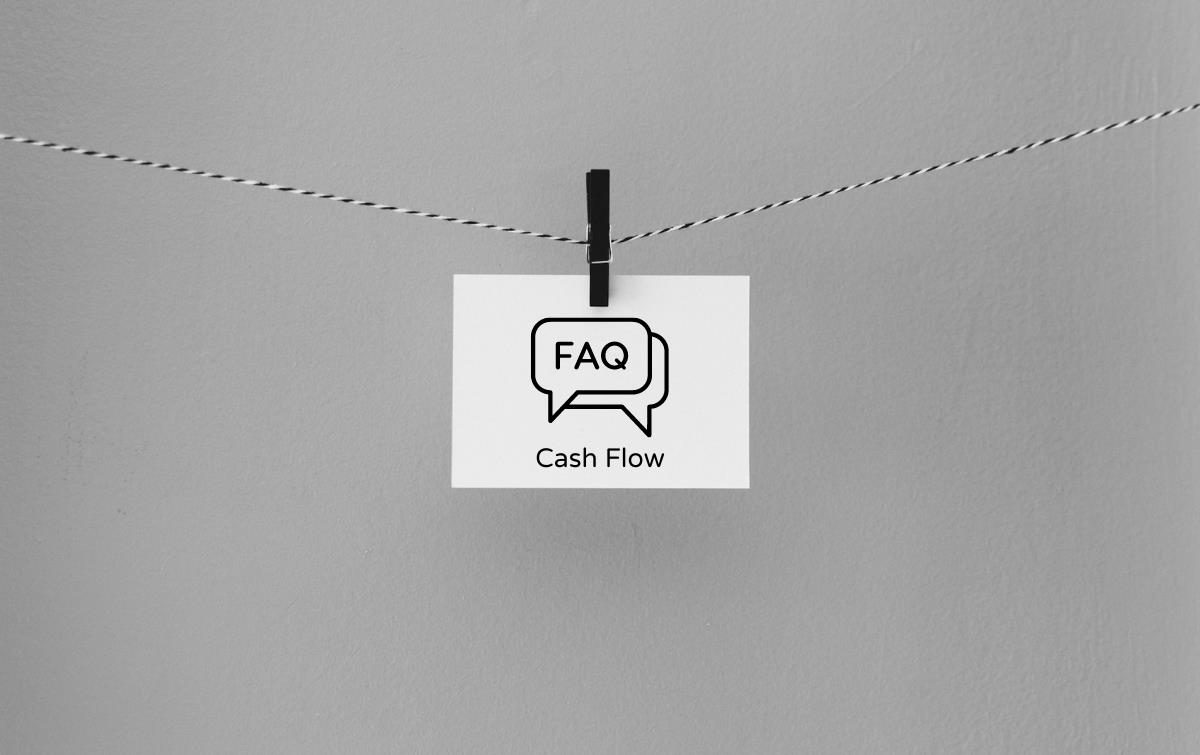Cash flow management is essential to every successful business in Australia. Without it, your business could have a negative cash flow without you even knowing!
But what causes a lack of cash flow?
Negative cash flow means your expenses are higher than your revenues which eventually leads to increased company debt and late payments that can derail a business. But if your cash flow is positive, it means you’re generating more cash than you’re spending which gives you a safety net against unforeseen events.
So how can a business improve its cash flow? You need effective cash flow management strategies.
In this article, you’ll learn how to improve cash flow with eight proven methods that can help you reduce expenses while increasing revenue.
Let’s dive in.
Methods to improve your cash flow
While there are countless strategies and tricks you can use to improve your company’s cash flow, the following eight solutions to cash flow problems are tried and tested:
1. Streamline expenses
The simplest way to improve your company’s cash flow is to simply review your expenses and identify areas where you can cut costs without sacrificing quality.
Some ways to do this include:
- Look for alternative suppliers and negotiate better rates (we’ll expand on this later).
- Explore technology solutions that can automate tasks and reduce labour costs.
- Analyse the return on investment (ROI) for each marketing channel you use and focus on the ones that yield the best results.
- Evaluate business-related travel (think conferences, business meetings, deliveries, etc.). Look for opportunities to minimise these costs, such as using video conferencing instead of meeting in person.

2. Improve invoicing and payment processes
Another way to improve cash flow is by improving your invoicing practices and encouraging clients to pay faster.
Here’s how:
- Send out invoices promptly after delivering goods or services, and consider setting up automated systems to generate and send invoices.
- Accept various payment options such as credit cards, debit cards, electronic bank transfers, and digital payment platforms (eg. PayPal).
- Use online payment systems that can generate professional invoices, track payment statuses, and send automated reminders. Alternatively, you can manually follow up on overdue invoices.
- Consider offering incentives for early payments or penalties for late payments.
3. Optimise inventory management
If you sell or use physical products in your business, excess inventory can tie up unnecessary capital if it's not managed properly.
Here are a few ways to optimise your inventory management:
- Implement inventory tracking systems or use inventory management software to monitor your stock levels accurately. These tools can help you track sales, identify popular products (and their less popular counterparts), and forecast future demand.
- Analyse big-picture market trends and customer insights to catch changing market dynamics early.
- Consider adopting a just-in-time inventory management approach, where you receive inventory shortly before it is needed for production or sale. Ensure you set appropriate reorder points and reorder quantities based on demand forecasts, supplier lead times, and desired service levels.
- Have a sustainable discounting process to help you get old stock out the door.
4. Negotiate supplier contracts
Once you’ve built strong relationships with your suppliers, you can negotiate better payment terms and contracts to help you manage cash flow. For example, extended payment periods or early payment discounts
These are some potential points of leverage when negotiating with suppliers:
- When it comes to long-term suppliers, you can talk about your loyalty as a customer and your good payment history.
- Look for opportunities to form strategic partnerships with suppliers. Collaborating closely with a supplier can lead to shared goals, better communication, and potential cost-saving initiatives, such as joint marketing efforts or long-term contracts.
- Research alternative suppliers to understand what other suppliers offer and use these to negotiate with your current suppliers.
- Consider consolidating your orders with a single supplier to streamline operations and negotiate better terms.
5. Control fixed overhead costs
Controlling your fixed overhead costs is an excellent cash management strategy as it's a consistent and predictable way to lower your expenses.
Some ways to lower your overhead costs include:
- Explore the possibility of sharing office space or equipment with other businesses as this can significantly reduce your expenses.
- Renegotiate your rental contract (or mortgage if you own the premises). Small reductions in these costs add up in the long run.
- Assess your utility bills, such as electricity, water, and internet services, and look for ways to reduce use. For example, install energy-efficient lighting, optimise temperature controls, and ensure proper insulation to minimize heating and cooling costs.
- Use cloud-based software for collaboration, communication, and data storage, to eliminate the need for expensive hardware. on-site servers, and in-person meetings.
6. Implement cash flow forecasting
If you don’t have an idea of your company’s cash flow fluctuations in the short and long term, it’s incredibly difficult to optimise your finances.
To combat this, develop a cash flow forecasting system to anticipate future cash inflows and outflows.
Here’s how:
- Start by gathering historical financial data, including cash inflows and outflows, for the past months or years. This data will serve as a foundation for your cash flow forecast.
- Identify inflows and outflows (both fixed and variable expenses for accuracy).
- Pay attention to the timing of both cash inflows and outflows. Consider the payment terms for your customers and suppliers, as well as any seasonal fluctuations that may affect your business.
- Use cash flow forecasting software to streamline the process and make accurate projections. These tools can help automate calculations, track actual cash flow against forecasts, and generate reports to analyse your financial position.
- Analyse your cash flow forecast to identify potential gaps or periods of low cash reserves. Once you identify potential cash flow gaps, take proactive measures to address them. This could involve securing a line of credit, renegotiating payment terms with suppliers or customers, adjusting your spending and investment plans, or exploring opportunities for additional funding.
7. Focus on sales and marketing
Another way to improve cash flow is to increase how much revenue is flowing into your business through effective sales and marketing strategies.
These are some ways you can do that:
- Clearly define your target market and understand their needs, preferences, and purchasing behaviours so you can develop compelling messaging that communicates the unique value proposition of your products or services.
- Explore cost-effective marketing channels that align with your target audience, such as social media, email marketing, and content marketing (such as blog posts and videos).
- Learn from what other successful companies both in and outside of your industry are implementing in their sales and marketing.
8. Encourage repeat business and customer loyalty
Acquiring new customers is more costly than retaining your current ones. That’s why focusing on customer retention is a surefire way to improve cash flow.
Some customer retention strategies include:
- Respond promptly to customer inquiries, resolve issues effectively, and go the extra mile to exceed expectations.
- Offer incentives or referral programs to existing customers who refer new customers to your business.
- Recognise and reward customer advocacy through shoutouts or posting testimonials on your website or social profiles.
- Actively seek feedback from your customers to understand their needs, preferences, and areas for improvement.
FAQs on improving cash flow

What are the signs of cash flow problems?
Some signs of cash flow problems include:
- Consistently low bank account balances.
- Difficulty paying bills or meeting financial obligations on time.
- Dependence on credit or loans to cover day-to-day expenses.
- Declining sales or revenue.
- Delayed or inconsistent customer payments.
How do you calculate cash flow?
Cash flow is typically calculated using this formula:
Cash Flow = Cash Inflows - Cash Outflows
Cash inflows include revenue from sales, loans, investments, and other cash sources while outflows encompass expenses such as operating costs, inventory purchases, loan repayments, etc.
Why is cash flow important?
Cash flow is important for the financial health and sustainability of a business because it provides the necessary funds to cover day-to-day expenses and operational costs.
It allows you to seize growth opportunities and expand operations, pay suppliers on time, and build a buffer for unforeseen circumstances or economic downturns.
How can you quickly improve cash flow?
Quick methods to improve cash flow include:
- Encourage customer payments by offering incentives for early payment or implementing stricter payment terms.
- Negotiate extended payment periods with suppliers.
- Reduce unnecessary expenses by reviewing and cutting non-essential costs.
- Explore financing options such as securing a line of credit or factoring invoices.
Cash flow: the most important thing to consider
When it comes to improving small business cash flow, the most important thing is consistency in your actions.
By consistently using tried and tested optimisation strategies, you’ll be able to manage cash flow challenges better and be in an excellent position to capitalise on growth opportunities.
And while improving your cash flow is certainly an effective way to grow your business, it’s not the only one.
If business growth is your focus in 2023 and beyond, make sure to check out our article on 8 easy steps to grow your business.
Now that you know how to solve cash flow problems the next step is implementation. So once you’re finished reading, pick the easiest methods and take action for some quick wins.
Good luck!
